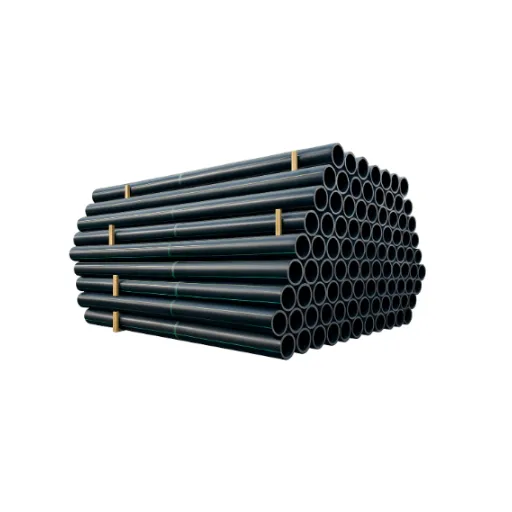The dimension ratios (or DRs) are the most important factors dictating not just the performance and efficiency of polyethylene piping systems but also the questions related to terminology. Out of these, DR9 and DR11 piping standards have special importance because of their widespread uses, such as water distribution, gas transmission, and industrial fluid applications. This article aims to clarify the mysterious relationship between DR9 and DR11 while looking at their different properties, advantages, and implementation procedures. If you are an engineer designing for optimum system design or a contractor looking for assured tubing solutions, here you have some of the technical aspects and practical know-how that will help you make the right choices. Now, let’s get deeper into how DR standards affect tubing systems in terms of functionality and serviceability in rigorous environments.
What is DR9?
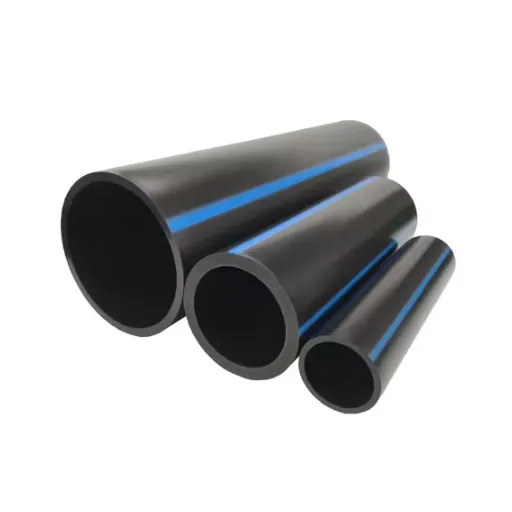
Definition and Overview
DR9 relates to the Dimension Ratio of any pipe, which is basically the ratio between the external diameter of the pipe and its wall thickness. More particularly, DR9 refers to any pipe whose external diameter is precisely nine times the wall thickness. This dimension ratio is typically used by engineering and construction professionals in describing the structural traits of thermoplastic piping systems, thus giving the piping pressure rating.
Pipes with a DR9 rating can resist higher pressures when compared to pipes rated DR11 and above. As it is, with a thicker wall, a DR9 gives more strength and rigidity and, in turn, carries water at higher pressures through applications, such as water transmission systems, mining, and industrial pipelines. Though the thicker walls produce stronger pipes, their weight may pose a problem for handling and installation.
These DR9 pipes should be selected depending on the pressure requirements and environment of the project, along with the material properties of the pipe. Coupled with such organizations, like ASTM and AWWA, which insist on meeting the strictest quality and performance standards, DR9 piping offers a foolproof solution to any critical application. Knowledge of these can help engineers and stakeholders decide whether DR9 fits their application.
Key Characteristics of DR9
The dimension ratio, which is the ratio of the diameter of a pipe’s outer surface to its wall thickness, defines DR9 pipes. These pipes have thicker walls than pipes with higher dimension ratios and hence, provide greater pressure capacity and flexibility. Thus, it is suitable for applications with a high-pressure rating, where it provides assurance in variable weather conditions.
DR9 pipes are known for their durability, which indeed owes itself to the thick-walled structure of the pipe system. This makes them capable of resisting external pressure, avoiding rupturing, and being suitable for long-term application installations. Besides, DR9 pipes are normally manufactured with HDPE, a material that assures the pipe system’s chemical resistance and longevity in the face of aggressive or corrosive fluids.
Uses of DR9 pipes include water transmission, gas distribution, and industrial fluid systems. Hence, they provide an assurance in strength-pressure rating material that works best for all piping systems where these attributes need to be balanced.
Importance in Various Industries
DR9 pipes see extensive use because they assure strength, which is able to sustain pressures, and resistance against environmental factors. The water supply sector depends on these DR9 pipes for the safe and efficient conveyance of potable water. They meet standards so rigorous, such as those laid down by the AWWA, that even under adverse conditions, communities that depend on these pipes have sources of drinkable water available to them.
Gas delivery issues with the high-pressure delivery of natural gas and other gases find a safe option and trusted solution with DR9 pipes. Installation according to regulations is essential for gas pressure delivery in domestic, commercial, and industrial buildings and sites where operational safety is ensured. Their material is designed to hold up against highly variable gas pressures and temperature ranges, hence eliminating the chance of leakage or failure.
Industries, most importantly, end up realizing the versatility that DR9 pipes offer. Chemical processes, wastewater treatment, and others are crucial fluids within manufacturing processes. With regard to chemical inhibition or corrosion, this increases the life span of treatment or process plants, which is important when system reliability is an issue and uptime is demanded. DR9 pipes go the extra step of being cost-effective, highly durable, and standard-compliant across all industries, making them fundamental to modern infrastructure and industrial undertakings.
Understanding DR9 Applications
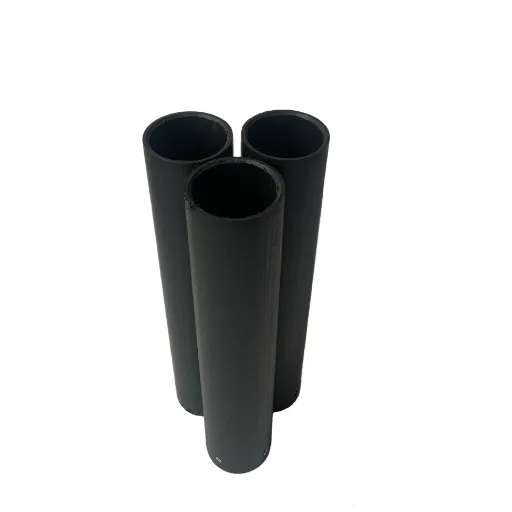
Common Uses of DR9
DR9 pipes are assigned widespread use in the high-speed industrial and commercial applications mainly due to their strength, chemical resistance, and value for money. One of the other uses undergoing application is potable water distribution systems. The high flow pressure rating of these pipes will ensure the safe conveyance of potable water with respect to all regulatory concerns and health standards. Also, DR9 pipes find their application in irrigation systems for agricultural management, wherever there is a need for UV resistance and long-term water pressure support.
Another application that is given importance in wastewater treatment, in which DR9 pipes have remained able to withstand corrosive chemicals and shifting flow rates. Owing to these properties, they have largely been implemented in municipal and industrial sewage conveyance, ensuring longevity and less need for maintenance. In these establishments, DR9 pipes are used widely for transporting chemicals, especially where aggressive or hazardous substances must be contained. Strength and reliability also take them to geothermal systems, providing high-temperature fluid conveyance.
DR9 pipes are thus extremely versatile and are expected to deliver on all stringent operational requirements and industry standards in infrastructure projects worldwide. Because of their adaptability to different environments, they remain an attractive proposition for developers, engineers, and contractors in multiple sectors.
Comparison with DR11
Above all, the difference between DR9 and DR11 pipes comes down to wall thickness and pressure rating. DR, or Dimension Ratio, is an internal measure for the pipe diametrically computed as the outside diameter of the pipe divided by the wall thickness. Hence, for DR9, the walls are thicker than for DR11; thus, it allows it to withstand higher internal pressure. DR9 is thus used in applications where high-pressure tolerances are required, such as high-pressure water systems and industrial processing.
DR11 pipes, on the other hand, have thinner walls, so they are lighter and, at times, more economical in price. These would be fine for lower-pressure systems where material saving is a priority, as well as ease of installation. DR11 is predominantly used for municipal water, wastewater, sewage, and other projects that require moderate pressure. Its thinner walls also mean it is easier to handle, and that lowers transportation costs.
From a performance standpoint, DR9 pipes are better designed to withstand operational stress under grave conditions due to their higher resistance to mechanical as well as environmental impacts, such as ground movement or high external loads. The other way to look at DR11 pipes is that they make a compromise between performance and economy, thus gaining popularity for all other regular applications.
In short, the choice between DR9 and DR11 should be made based on a thorough study of project pressure considerations, environmental considerations, and budget constraints. Different though they may be, both dimensions subject themselves to stringent industry standards and thereby guarantee that they are reliable in all sorts of operating conditions.
Advantages of Using DR9
- High-Pressure Handling Capabilities: The DR9 pipes are constructed with thicker walls than other DR Pipes, which impart high strength against high pressure. Therefore, they are preferably used where the sustained or peak operating pressure is in excess of 200 PSI.
- Durability: Owing to their sturdy design, DR9 pipes are highly resistant to mechanical stresses and external impacts. This durability, in return, offers extended service life, meaning less frequent replacements and reduced maintenance.
- Efficient Performance in Testy Environmental Conditions: DR9 pipes lend themselves well to use in testy environments, like extreme temperatures and abrasive conditions. The integrity of their material will not be compromised by heavy external loads or varying internal pressures, thus allowing these pipes to ensure consistent performance.
- Compliance with Industry Standards: Being manufactured in conformance with stringent industry standards, DR9 pipes offer reliability and safety to respective applications. They generally find certification for installation in potable water systems, gas distribution networks, and other critical facility works requiring usually uncompromised quality and follow-through.
- Cost-Effectiveness for Specialized Applications: DR9 pipes, while incurring a higher initial cost, are disadvantageously less so when we compare the margin of operational risks against the extended life of such pipes. It makes these pipes a cost-effective choice in high-performance projects requiring stringent technical specifications.
Technical Aspects of DR9
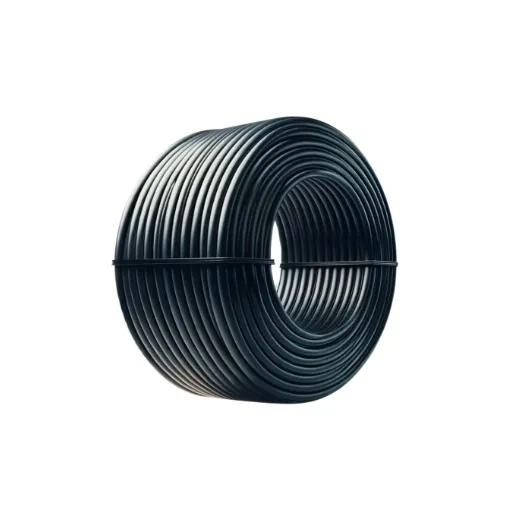
Material Properties
DR9 pipes are made from HDPE. The chemical shall be chosen for maximum durability, flexibility, and resistance to other environmental factors. The HDPE has a very good tensile strength-to-density ratio; therefore, the pipes will undergo high internal pressures and will remain almost lightweight. Chemically, based on its molecular structure, DR9 pipes are highly resistant to corrosion from chemicals. Thus, the pipes may be used in applications with aggressive substances or in a scenario of varying pH.
Another advantage that DR9 pipes yield is a very good resistance to crack propagation due to their ductility. This property is known as slow crack growth (SCG) resistance, which greatly increases pipe life in unfavorable environmental scenarios. Properly developed, these pipes will retain their strength when exposed to changes in temperature so that the desired performance can be obtained in both very hot and very cold climates. The material, on the other hand, is backed up by UV protection to avoid its premature aging on exposure to sunlight, especially an advantage in above-ground installation.
Under these advanced materials engineering, the DR-9 pipes would sustain the demanding conditions of projects involving high pressures, chemical exposure, and extreme environmental conditions. These properties make them the preferred selection for municipal water systems, industrial, and performance infrastructure projects.
Manufacturing Processes
The production of DR9 pipes involved a fine balance between precision engineering techniques with several quality control protocols acting to provide the assurance of the utmost performance and reliability. High-density polyethylene (HDPE) granules are heated, melted, and homogenized using extrusion equipment under parameter-controlled conditions. This constitution of operations is said to ensure a uniform material consistency that may affect the mechanical properties and resistance of the pipe to environmental stress cracking.
During the extrusion phase, the molten material is pushed by an extrusion screw through a die designed to shape the pipes to the expected dimensions. Die engineering has to be very precise to allow for the pipes having an almost exact wall thickness because the DR9 specification requires fixed diameter-to-wall thickness ratios that handle pressure. After extrusion, the pipe is quickly cooled either in a bath of water or by air cooling. This cooling step then completes the solidification of the inner side structure of the pipe, so defects may be allowed to form if the cooling rates are uneven.
Following extrusion, the pipes are subjected to rigorous testing to establish if they meet the industry specification tests, quality assurance, hydrostatic pressure testing, tensile strength, and dimensional checks. Besides, ultrasonic inspection methods are used to detect irregularities or possible weak points inside the walls of the pipe. These piping systems, in keeping with state-of-the-art manufacturing technology and continuous monitoring of quality, ensure that DR9 pipes achieve extreme strength and performance for use in varying applications.
Challenges and Considerations
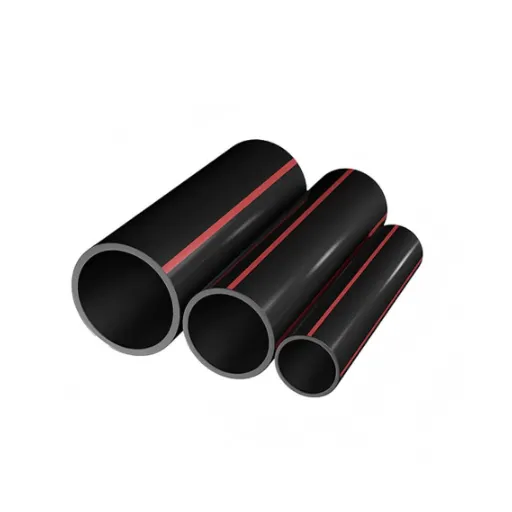
Limitations of DR9
While DR9 piping systems ensure outstanding durability and offer good performance under the widest varying range of application conditions, explicit limitations apply concerning their application. In the first instance, DR9 pipes are less flexible than the higher-density pipes. They are likely to be damaged if subjected to extreme bending stresses or extreme conditions of soil movements. Then again, DR9 pipes may not be required in high-pressure industrial systems or where higher safety requirements are necessary, requiring alternatives either in terms of another material or a higher-density pipe design.
Other concerns include temperature sensitivity, which affects performance mainly under extremes of heat or cold. Prolonged exposure at temperatures above or below the recommended range could lead to accelerated degradation of the material, thereby affecting the pipe’s longevity and reliability. Other installation requirements peculiar to the DR9 system include something like more precise trench preparation and joint alignment. They could indeed translate into a cost increase for the project due to the increased skill level of the installer and labor.
Lastly, DR9 pipes usually comply with regulations and standards; however, their chemical compatibility is limited under special exposure conditions. Hence, any industry involving aggressive chemicals or corrosive substances, for long-term exposure of the pipe, has to consider a thorough compatibility assessment to avoid material degradation or complete failure of the system. This consideration highlights the necessity to consider site-specific conditions and operational requirements while utilizing DR9 piping in infrastructure projects.
Common Issues in Implementation
Various difficulties are encountered during the installation of any DR9 piping system, many of which result from improper design, erection errors, or overlooking environmental variables. One major problem arises from the lack of proper evaluation of pressure ratings or flow requirements, and may also lead to premature pipe failure or inefficiency in the system. This generally arises when calculations are made by considering standards without giving enough attention to the site-specific conditions that may include items such as temperature variations, type of soil, or externally applied mechanical forces.
An improperly fitted joint or inadequate welding may further reduce the strength of the piping assembly. Even small defects in joints may cause leakage or instability of the system under operating pressures. During installation, sources of contamination might include debris in the pipes, thereby obstructing flow and lowering the performance of the system.
But it is also vital to consider these properties from the viewpoint of thermal expansion and contraction, by which stresses may arise with the passage of time. There is a high chance of stress cracking if these things are neglected over time, especially where the pipeline is subjected to large temperature variations. Rigorous quality controls, both at the design and construction stage,s must be adopted to overcome these common problems. Field monitoring and regular maintenance should also be adopted for the overall success of DR9 piping systems.
Best Practices for Successful Use
The overall performance and durability of DR9 piping systems could be maximized through an array of best practices. Foremost, the correct selection of material should be exercised for the operating environment where differences in pressure ratings, chemical compatibility, or temperature ranges are important. While installing, an installation should promote and maintain proper alignment and joint integrity, thereby minimizing stress concentrations that could cause long-term weaknesses.
Before system commissioning, an advanced non-destructive testing method could be utilized to reveal any latent defects. An inspection and maintenance program should then be implemented to monitor for early signs of wear, stress, or degradation; this would use ultrasonic or radiographic testing and pressure monitoring to verify that the piping system is performing within its design.
Finally, data analytics-driven monitoring can provide added value to the system monitoring process by uncovering trends and anomalies indicative of pending failure. The combination of the best practices with an emphasis on quality assurance can therefore provide DR9 piping systems a significantly extended operational life expectancy with minimal risk of failure.
Future of DR9 Technology
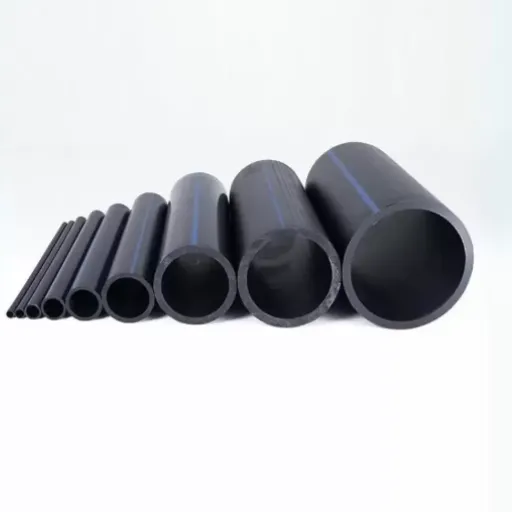
Trends in DR9 Development
Enhanced by the progress in materials sciences, manufacturing technologies, and digital integration strategies, the development of DR9 technology thus continues. A major trend has been toward enhanced polymer composites that gave DR9 piping systems a greater strength-to-weight ratio while offering the polymer equal flexibility and environmental stress-crack resistance. Materials for such systems are also being designed with a wider range of temperature and pressure ratings, thereby enabling DR9 systems to be used in more demanding operational environments.
There is yet another trend wherein, although the Internet of Things (IoT) devices and sensors are embedded into DR9 systems. These smart units give the system real-time data about flow rates, pressure levels, and potential weak points in the infrastructure, thereby building a framework for predictive maintenance and improving overall system performance. This smart integration minimizes depreciation arising from maintenance downtime and, in some way, contributes to sustainability by averting major failure and associated wastage of materials.
Plus, emerging manufacturing technologies such as 3D printing and automated extrusion are reducing production costs and guaranteeing the highest quality standards for DR9 piping systems. These also accelerate production cycles while allowing for customization of pipe geometries to fit specific project requirements.
Lastly, sustainability continues to have paramount importance, with researchers focusing on creating recyclable materials and finding ways to reduce the carbon footprint resulting from the production and transportation of DR9 components. As such, these trends shall together usher DR9 technology into a high stage of performance, reliability, and environmental friendliness.
Innovations in Tube Applications
Recent advancements in tube technology have revolutionized various industrial and commercial sectors. Below are five significant innovations in tube applications:
-
1
Advanced Corrosion-Resistant Coatings: In the past few years, coating technologies have been improving to withstand unusual environmental conditions such as high humidity and very specific chemicals. In this respect, titanium coatings showed a 40% better corrosion resistance than the classical galvanization coating, thus making it ideal for marine, chemical treatment, and oil pipeline applications.
-
2
High-Pressure Tolerance Tubes: Engineering advances have given rise to tubes able to withstand maximum pressures in excess of 10,000 PSI. Such tubes are extensively applied in hydraulic and fuel injection systems. The tests under laboratory conditions reported an improvement in the operational safety margin of 25% with no compromise in performance.
-
3
Smart Sensor-Embedded Tubes: Advances in smart manufacturing have merged the sensors within the tube walls, monitoring in real time, such as temperature, pressure, and flow rates. First usages in energy systems have witnessed a decrease in unplanned downtime of 30% due to predictive maintenance.
-
4
Lightweight Composite Tubes: Composite materials such as carbon fiber-reinforced polymers (CFRP) have been used to make tubes that are extremely lightweight and strong in tensile strength. Lightweight tubes provide a 50% weight advantage relative to steel with equal structural integrity, thus playing a critical role in the aerospace and automotive industries, working toward improved fuel efficiency.
-
5
Enhanced Heat Transfer Solutions: Development of micro-finned and helically grooved internal structures has contributed greatly to the improvement of heat transfer efficiency in tubes. According to very recent experiments, this resulted in about 20% improvement in thermal conductivity, thus facilitating performance enhancement of HVAC systems, heat exchangers, and industrial cooling applications.
These tube-related developments not only improve the performance and reliability of tube systems but also address pertinent issues such as sustainability, efficiency, and cost implications.
Potential Market Growth
The market will be greatly expanded for new-generation heat transfer tube technologies due to energy efficiency and green solutions being given a lot of emphasis worldwide. Recent market studies revealed that high-performance HVAC systems and industrial equipment will increase at a CAGR of nearly 6% in the upcoming ten years. This growth is further exacerbated by stricter governmental regulations governing energy consumption and carbon emissions. In fact, the application of micro-finned and helically grooved tube types directly corresponds to styles that are changing in the market according to the competitive edge in performance and compliance.
Thus, from a production standpoint, the enhancement of these heat transfer mechanisms provides the opportunity for businesses to set themselves apart in the HVAC, chemical processing, and power generation fields. Continuous thermal management areas, like data centers and renewable energy plants, represent a high-value market for these novel products. Manufacturers putting their resources into research and development to improve these technologies will emerge as the major shareholders of this growing market as end users demand proven, cost-effective solutions to offset increased energy costs.
My personal perspective is that this growth in the market is a good opportunity and a challenge. It provides a fertile environment for innovation, cooperation, and scaling of production facilities. By focusing on production technique optimizations and genuine needs in applying real applications, we will not only react to but also begin to shape the nature of these changes in the industry. Still, the commitment to sustainability and cost efficiency cannot be compromised in the long-term trust of consumers and in their continued relevance in the market.
Frequently Asked Questions (FAQ)
Q: What is DR9 pipe?
A: DR9 pipe is one type of pipe, based on its pressure rating and wall thickness. The term DR stands for Dimension Ratio, which means the ratio of the nominal diameter of the pipe to its wall thickness. A DR9 pipe would therefore have a wall thickness one-ninth of its outer diameter. Many times, it is important to know the ends of this pipe for applications dealing with pressure variations.
Q: What are the common sizes for DR9 pipes?
A: DR9 pipes come in different sizes for many different applications. Nominal sizes would generally include anything greater than 1.5 inches. The outer diameter changes as the size increases, but it is vital to select a size that best suits the needs of your project to ensure its optimal performance and safety.
Q: How can one study the effectiveness of DR9 pipes?
A: Studying the effectiveness of DR9 pipes would cover major factors such as the strength of the material, pressure ratings, and the particular needs of the applications. Correct analysis will determine whether such a pipe is suitable for your project and will satisfy the safety and functional needs.
Q: How safe installation of DR9 pipes take place?
A: Safe installation of DR9 pipes requires proper planning and the observance of certain industry standards. Prior to installation, the layout should be explored. Then, examine whether the ground is stable while the actual installation procedure is carried out. Also, respect the manufacturer’s recommendations as to the height of clear installation and the width of installation areas to achieve safe installations and efficient implementation.
Q: Are DR9 pipes applicable in the global market?
A: The DR9 pipe finds universal application due to its multiapplication and reliability. It is broadly used for water distribution and gas conveyance and is probably the most highly preferred pipe across the world. Knowledge of the demand of each given region can improve the usefulness of these pipes in any given environment.
Q: What are the merits of using DR9 pipes?
A: The merits of DR9 pipes are durability, economy, and interfacing with any system. Better pressure control is built into the design process of these pipes. DR9 pipes, thus, are very useful in residential and industrial cases. These pipes, being in various sizes, make them workable for a lot of requirements.
Q: How to measure the proper size of DR9 pipe for use in a project?
A: To measure the proper size of DR9 pipe for your project, check the required flow rate, pressure at the site, and any other application-specific considerations. Professional help can be sought from engineers or experts in the field for selecting the correct nominal size, which will assure the pipe’s effective performance in its intended application.
Q: Can the DR9 pipe be used for high-pressure requirements?
A: Yes, DR9 can be used in high pressure, considering that they are chosen in accordance with their pressure rating and wall thickness, noting the pressure limits at which they can be effectively used, and proper installation procedures will secure safety and functionality in high-pressure applications.
Q: What materials are generally used to make DR9 pipes?
A: DR9 pipes manufactured of different materials include PVC, HDPE, and metal alloys. The diverse effects of each material are great in terms of strength, flexibility, and corrosion resistance. Selecting the right material on the basis of the application will contribute to better performance.
Q: How to care for DR9 pipes so they last longer?
A: To provide longevity for DR9 pipes, they may undergo a few procedures and maintenance, whereby cleaning and inspection exercises are carried out regularly. This ensures pipe durability by keeping them free from debris and leaks. Furthermore, pressure and flow rates can be monitored in time to detect potential concerns early, allowing timely maintenance and repairs.
References
- Domestic Building Water Piping Specifications – Johns Hopkins Facilities & Real Estate
There is a detailed specification of the domestic water pipe, including applications of DR9 pipes. - (PDF) Process Piping Guide R2 – Academia.edu
This guide looks at rating and application of DR9 pipes and gives some insight into their usage and specifications. - Kristi K. Steiner Thesis – Virginia Tech VTechWorks
This thesis includes the use of DR9 pipes in trench methods; therefore, it has an understanding of the related technologies.



